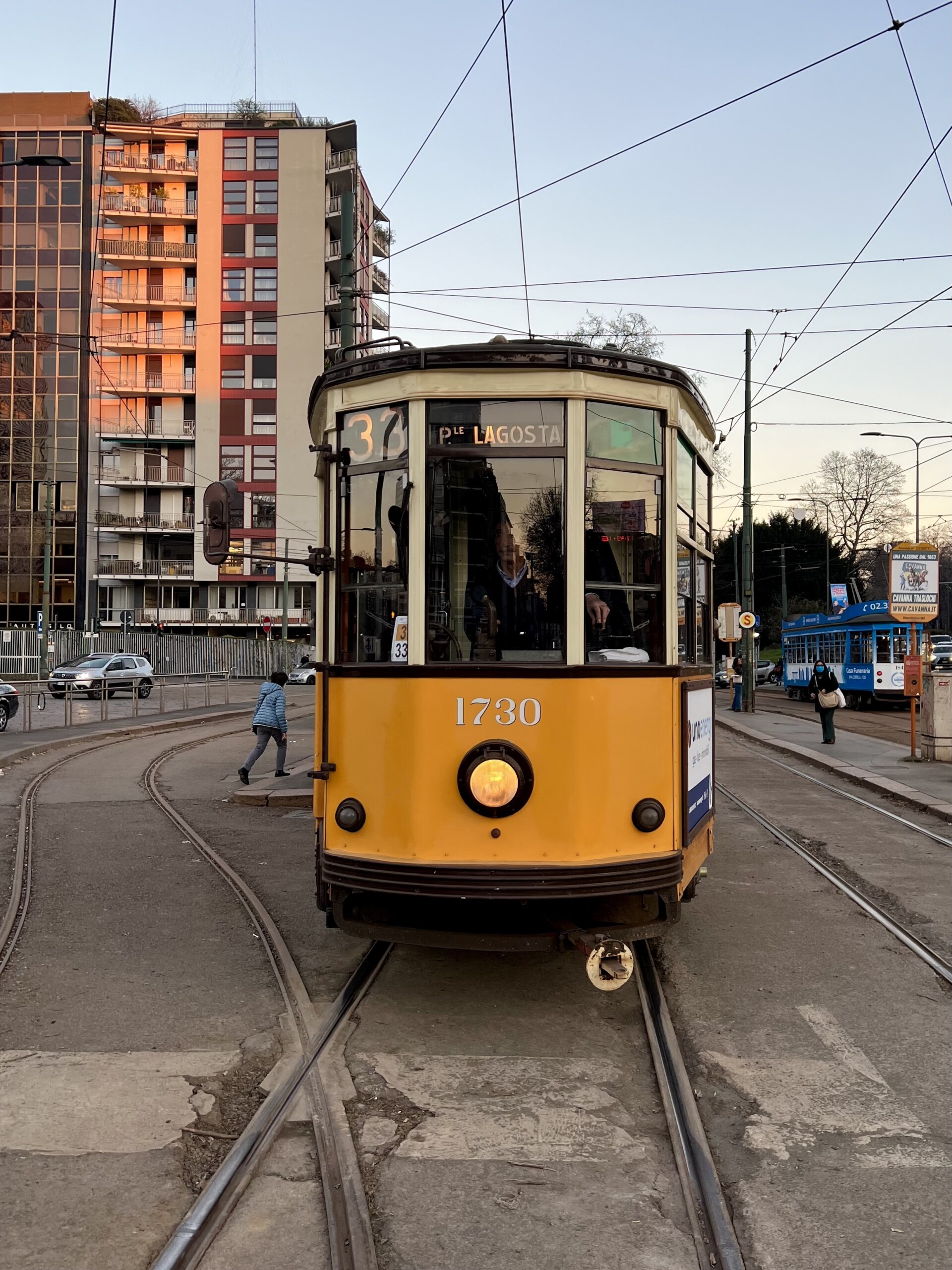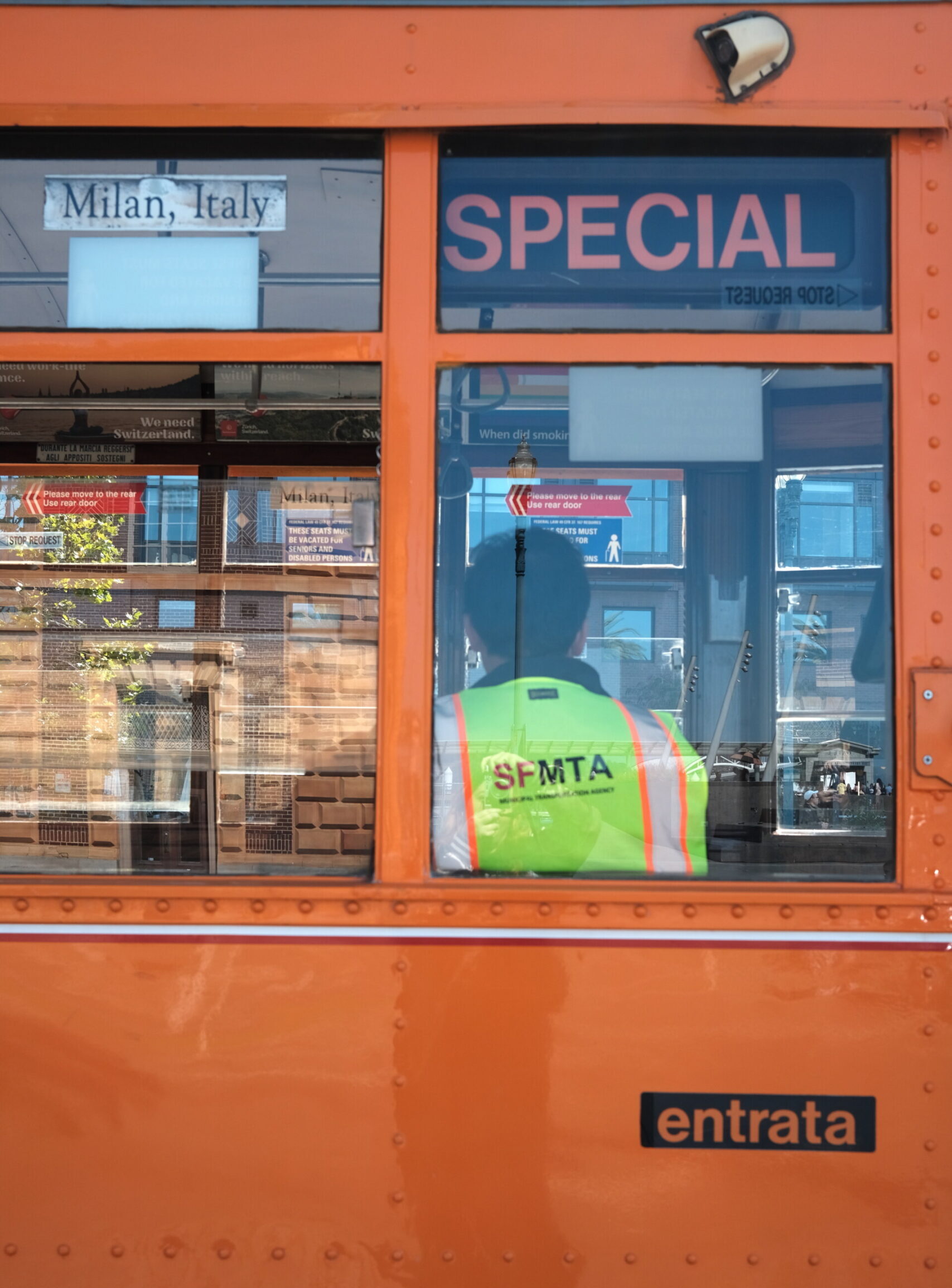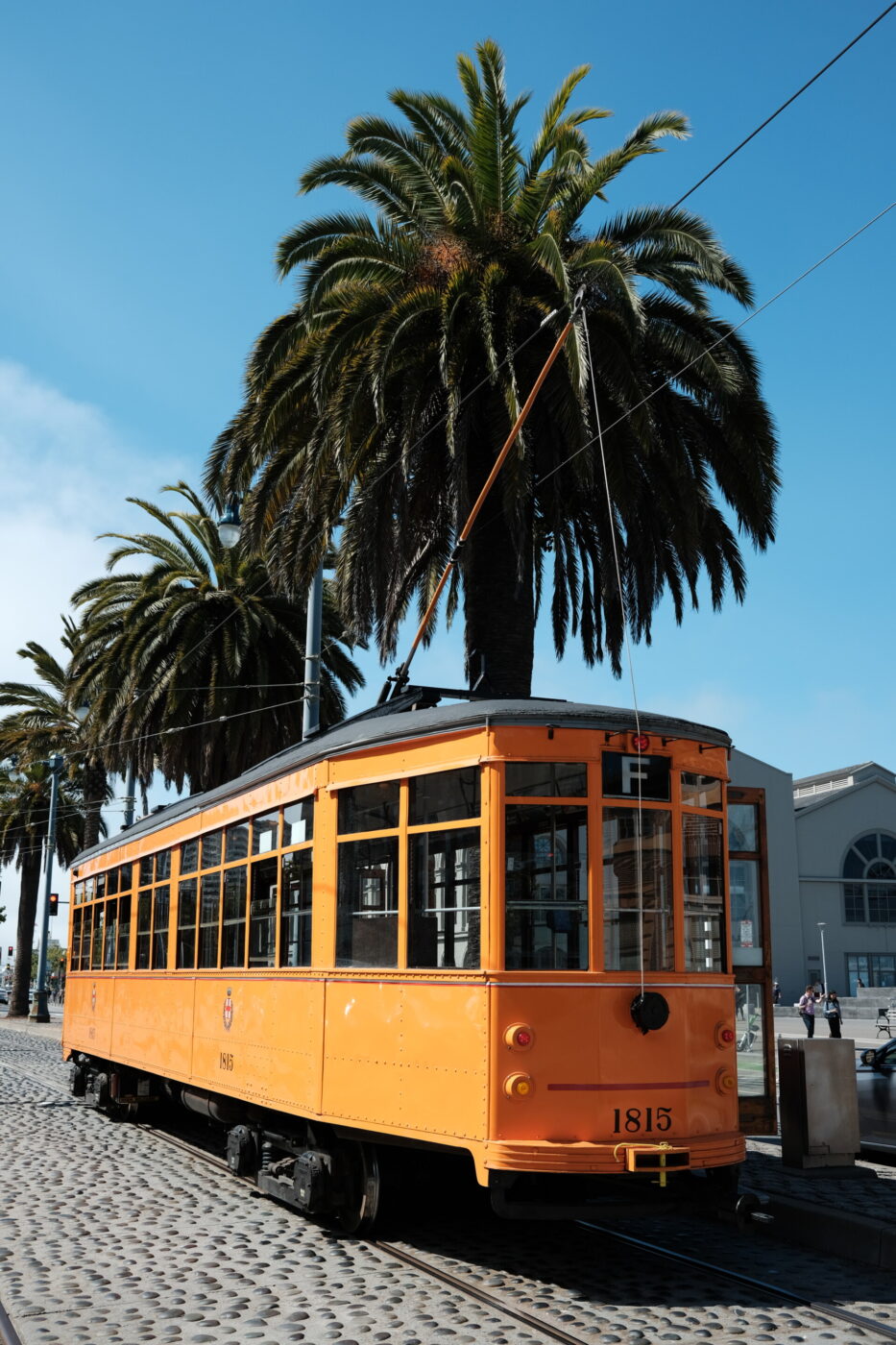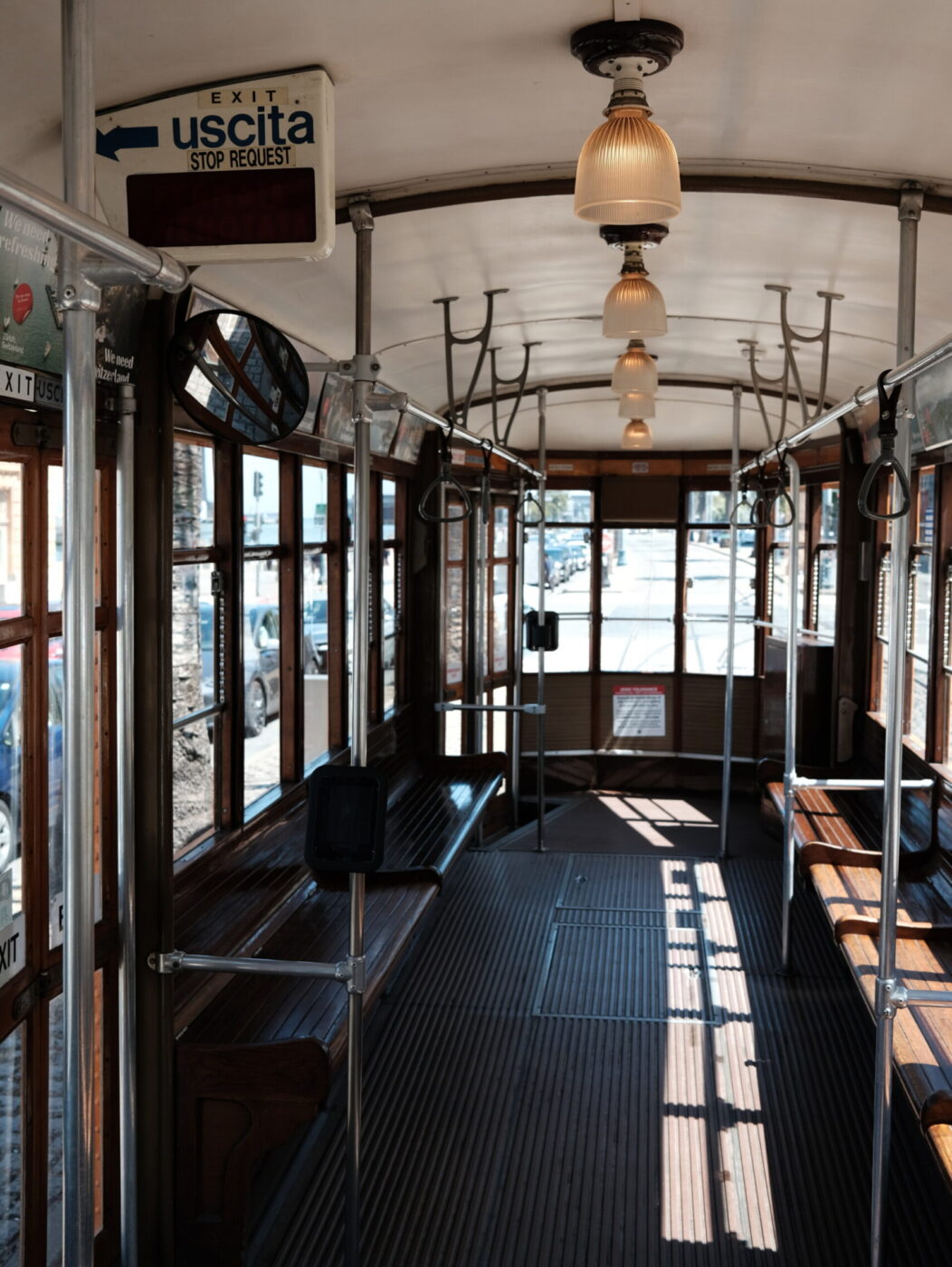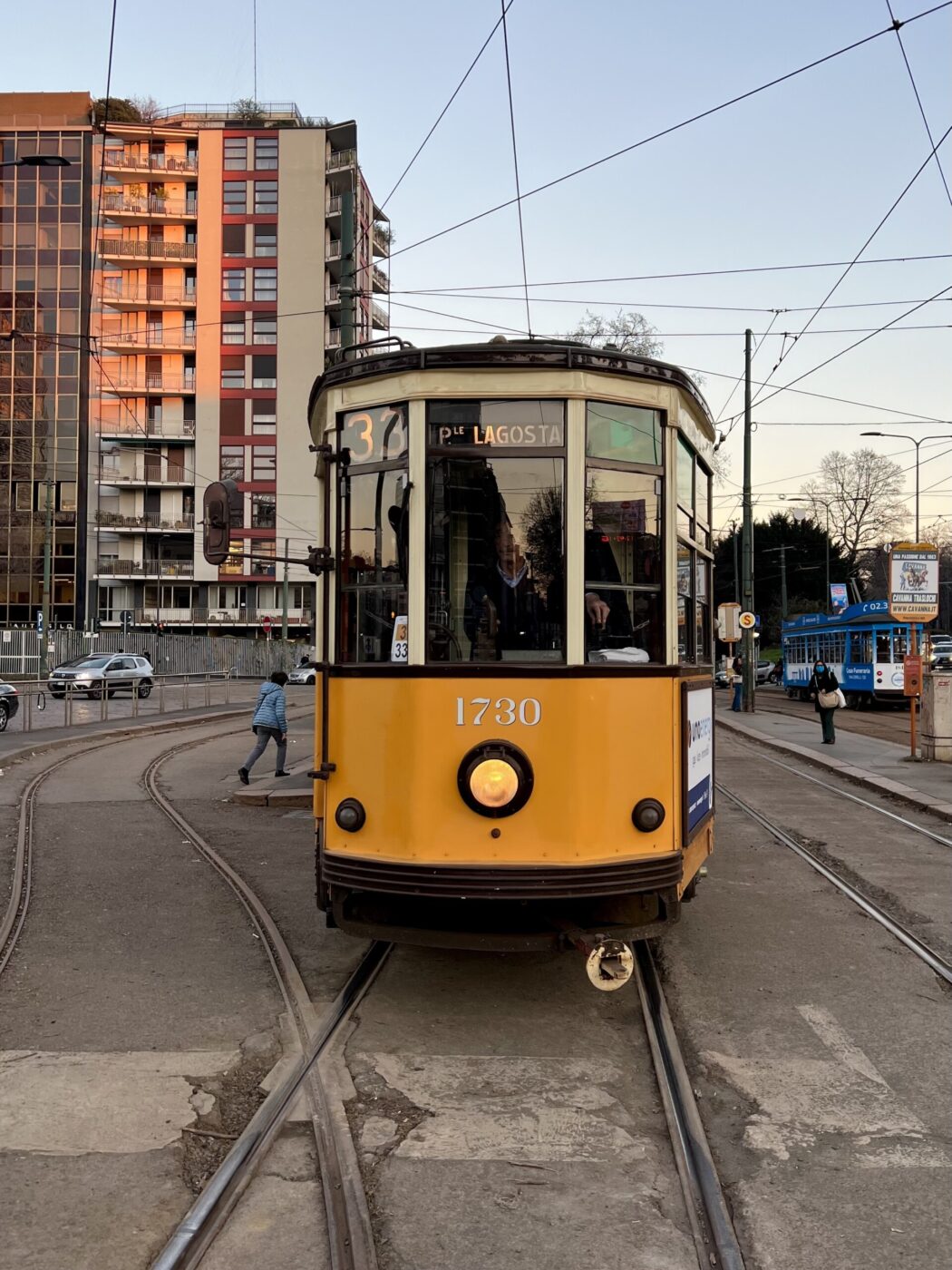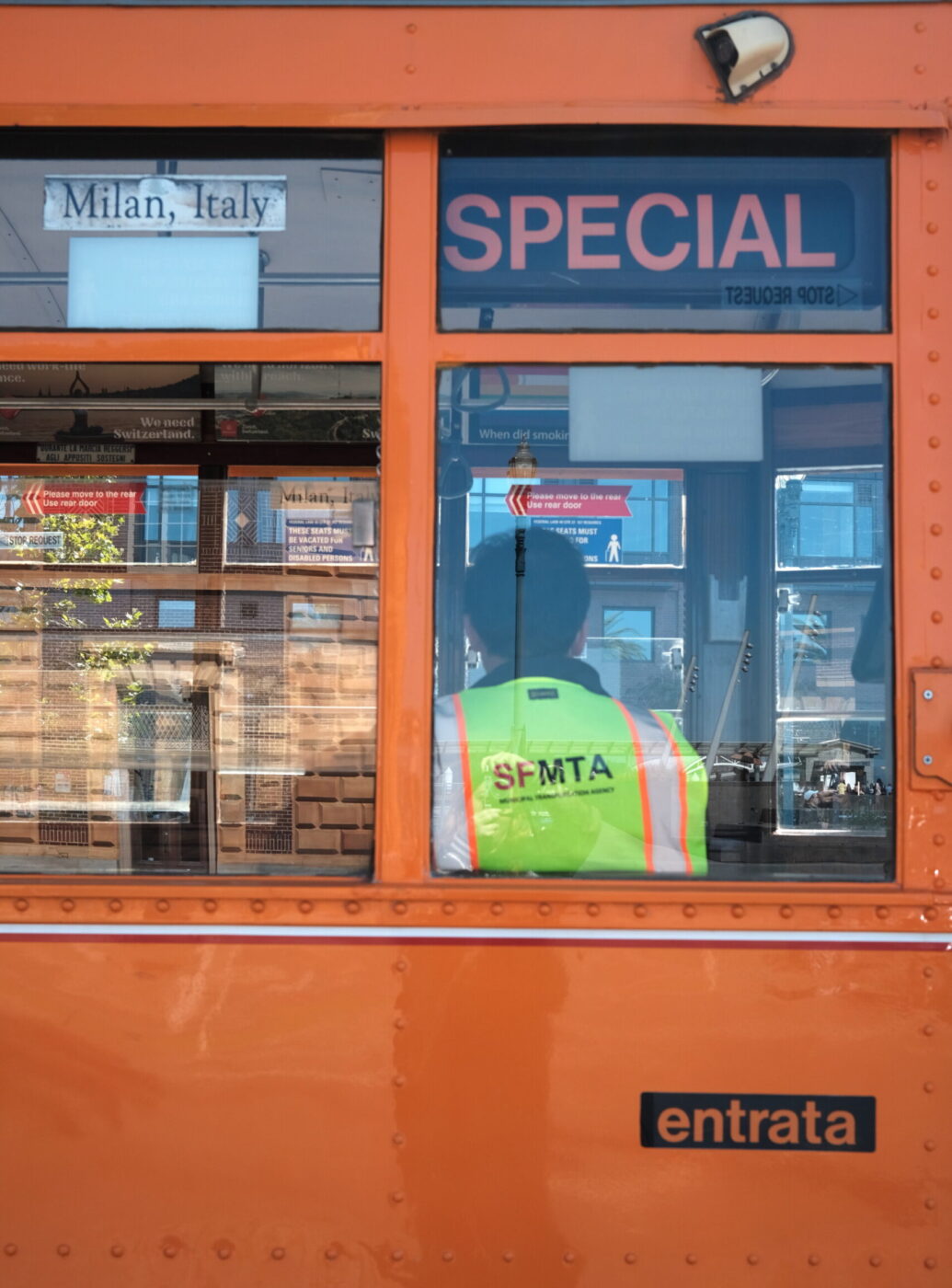Looking up at the small sign that says Uscita, as the street car rattles and shakes down the Embarcadero along the San Francisco Bay, I think about what it means, to exit, to get out, to leave.
Like so many before it, this tram, complete with all of its original elements, left its home in Milan, destined to ride along the streets of San Francisco, a beautiful relic of the old country. All the Italian signs still remain, some plastered with English words next to it and some without translation. It is by all accounts a Milanese tram, but somehow more striking in contrast to its foreign setting, surrounded by California palm trees.
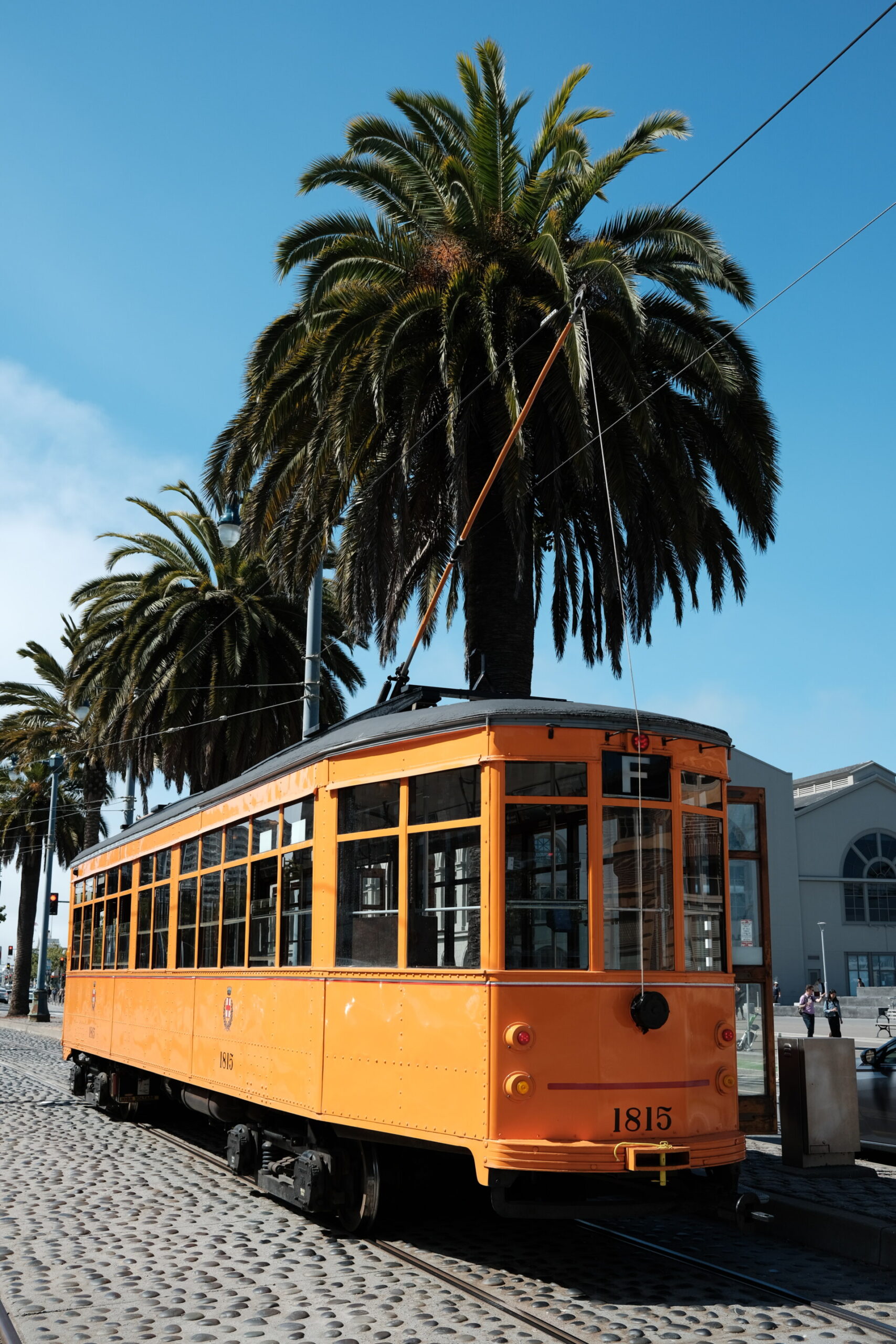
Along SF's Embarcadero; Photo by Ariana Rizzato
In many ways, this tram represents a story that we Italian-Americans have heard and been a part of our whole lives. The tram was built in 1927, the same year my grandmother was born. A northern Italian woman who, like many others, faced the horrors of WWII, seeing her village massacred and hiding under bridges to escape falling bombs. Dreaming of another life, maybe one that she had seen in the movies, she packed it all up and moved to a place she had never been, speaking a language she had never spoken, and leaving a life she had always known.
The beep of the streetcar brings me back to the ride I am now taking along the bay, where the blue skies meld with the water, creating a blurred line on the horizon. The driver of this historic car is also an immigrant; he moved to San Francisco 30 years ago and has been driving this tram for ten. The car runs for free on Sunday and picks up eager tourists, their phones out to take photos of this anomaly. Bright orange paint, narrow and sleek rolling alongside the classic American cars, big and round and bulky.
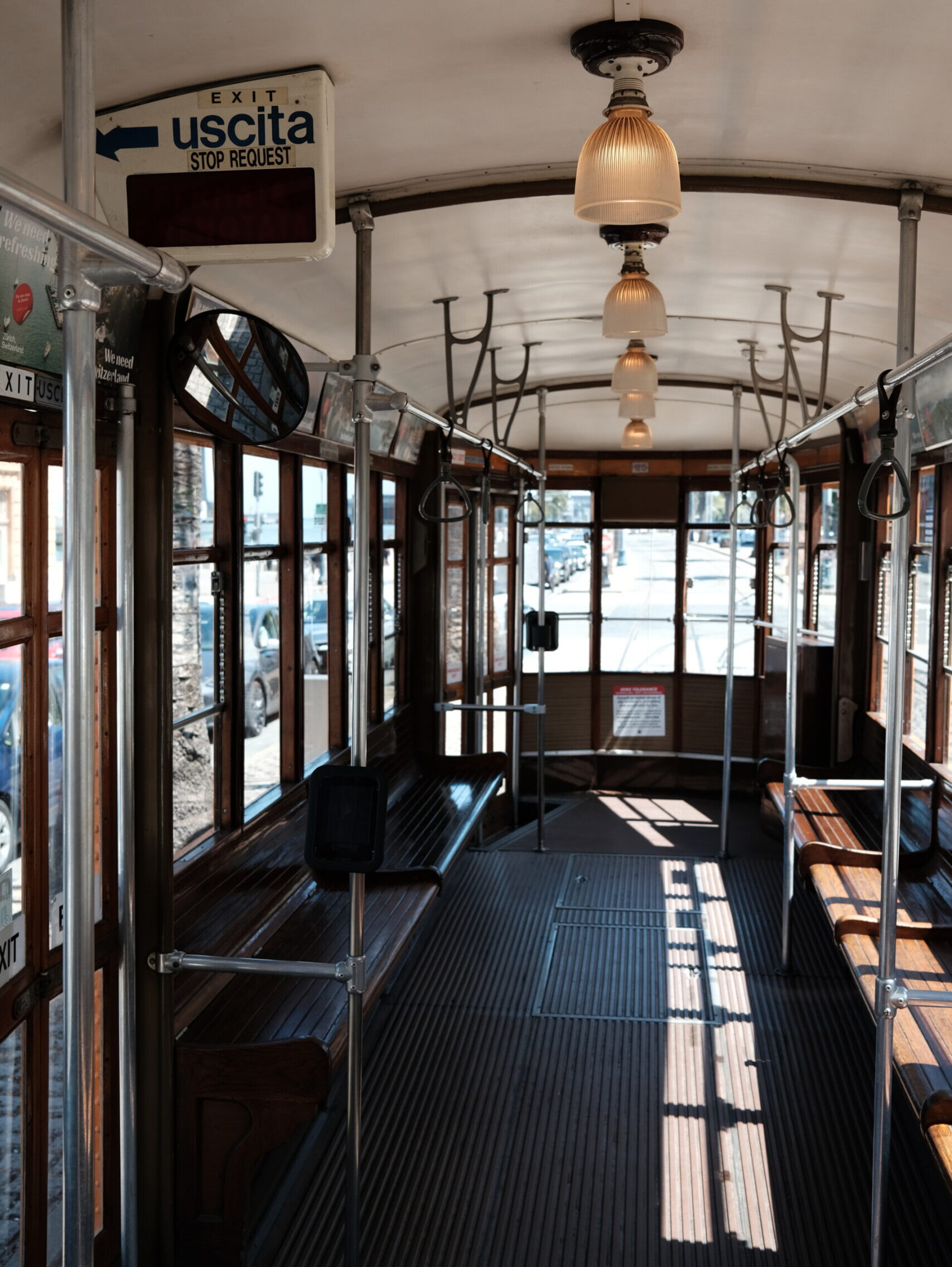
Inside the tram in SF; Photo by Ariana Rizzato
The interior of this tram reminds me of my Nonna’s house, finely lined with beautiful wood furnishings, with glass chandeliers that hang from the ceiling; it has a warm, homey feel. The driver stops for a break, letting me take photos as he leaves the car doors open. Tourists approach him to ask questions about local attractions and whether this car goes to them. “How do we get to Lombard street?” They ask, and he kindly replies, “the top or the bottom?” The couple doesn’t quite understand and they make squiggly motions with their hands, gesturing rather than using words. The road is famously windy–they call it the crookedest street in the world–with sharp turns back and forth. He smiles and tells them how to get to the bottom.
Built by Carminati & Toselli, a company dissolved in 1935, the ATM 1500 tram came to San Francisco as a part of the Historic Trolley Festival in 1984, with ten more being ordered the following year to keep up with the demand of the newly formed F-line, which runs along San Francisco’s Embarcadero from the famed Ferry Building to Pier 39. Before arriving here, they were damaged in the bombings of WWII, repaired and reconstructed in the late 1940s. They were put back together before they left, seemingly intact but still forever changed, many of the 135 that still exist staying in Milan, and others moving to other parts of Italy and Europe. Much like that crooked street in San Francisco, their journeys haven’t been a straight path; many have since been put in museums (including Sydney’s Tram Museum and Milan’s own National Museum of Science and Technology), deemed no longer functional. But in the City by the Bay, these trams are treated with love. They’ve been updated with modernities like GPS, though some of their original posters remain fixed in the cars, with one displaying “Milano – Parigi in 7 1/2 hours”.

A tram from 1834 turning onto Noe Street from 17th during the 1987 Historic Trolley Festival; Photo by Steve Morgan
The driver allows me to come to the front, showing me all of the knobs, buttons, and switches that are still in Italian. I ask him, “So you speak a little Italian then?” And he laughs as I teach him the word for “a little.” I also show off a bit of my Chinese, the language I learned when I followed in my Nonna’s footsteps, running away for a new adventure.
As we glide along the tracks, passengers get on and off. Families, friends, some on their way to work, some on vacation, others just along for the ride, like me. The same way they have for 100 years, on two different continents, living their day to day. I think back to when I used to take this tram to school. The first time I noticed the words in Italian, I was riding with a guy in my class who was here studying as an international student. He asked me “Why are the signs in Italian?” and I joked “We’re everywhere.” But what a beautiful thought, that we can find a piece of ourselves everywhere we go.
Stepping off the car, I thank the driver, and he kindly offers to take a few photos of me. After a nudge, I climb into the front and pose like I’m the driver, beeping the horn obnoxiously. I feel transported back to a home that lives in my blood. A place that is unique, in-between two worlds. Not Italian but not American, both Milanese and San Franciscan. Both a runaway and a resident.
